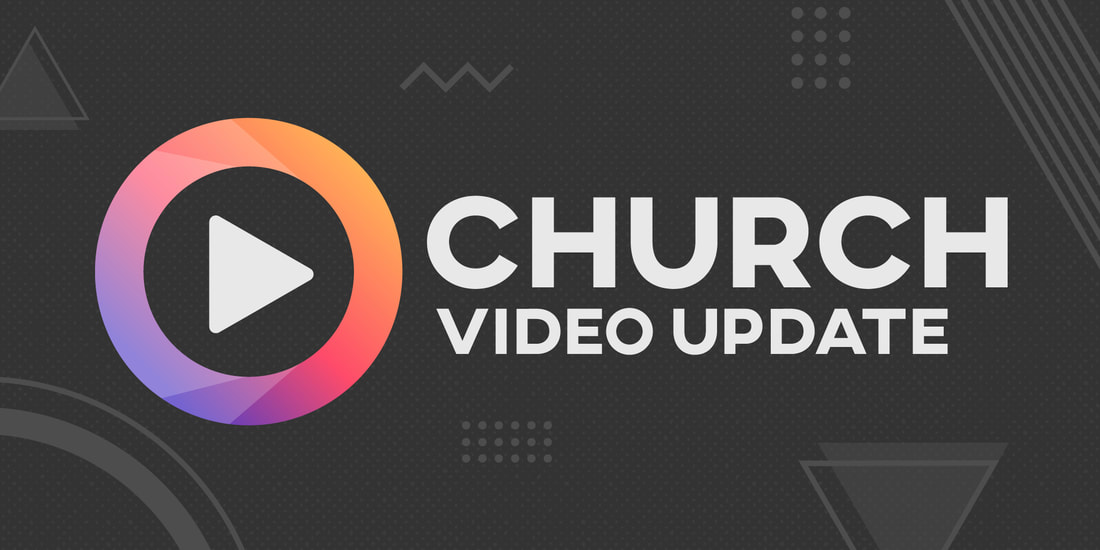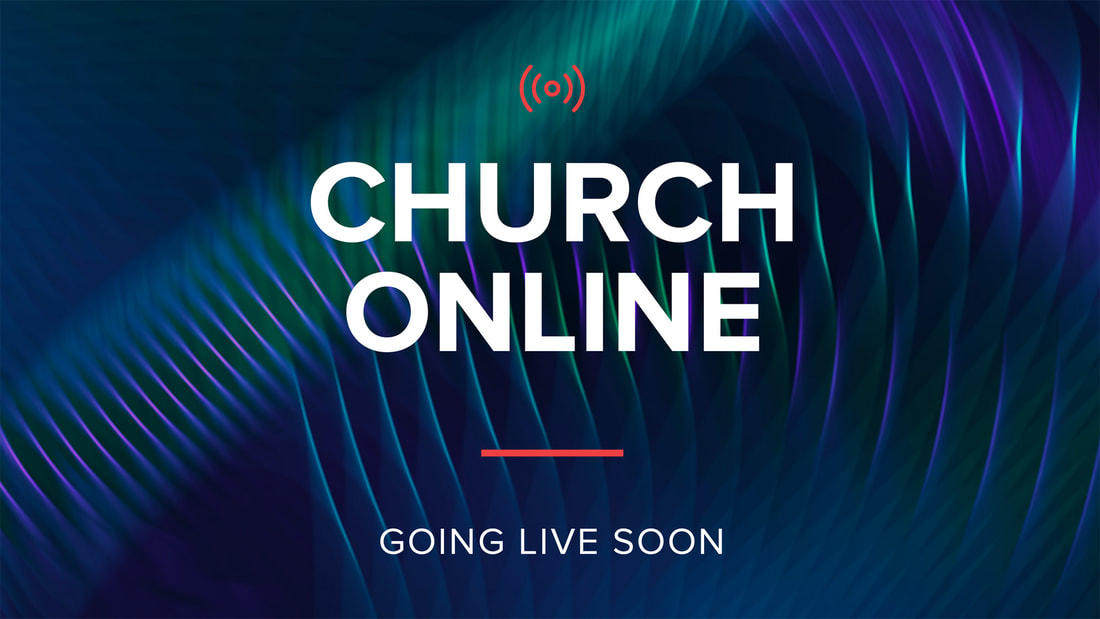Jamie Jean Schneider DommDigital Strategist, Social Media + Big Data, North American Division Justin KhoeDigital Missionary, "I’m Listening with Justin Khoe; Life. Faith. And the things that matter." One major question that you should ask yourself about any piece of content uploaded to social media is, “Why would anyone care to watch or listen?” While uploading your full worship service will certainly be a blessing to your current church body, think about each online viewer as a first-time guest.
Before a prospective viewer can get to the actual message, many ministries force them to sit through 20−30 minutes of content that is irrelevant to them. Why should someone who has never been to your church care about the announcements, special music, or offertory? Instead of uploading your program’s entire livestream to YouTube, a better approach would be to optimize your content for this specific platform once the live event is over. Realize that YouTube is a search engine; it’s a social community with its own subculture and set of social norms. Upload just the individual sermons or messages from your evangelistic series or camp meetings, and optimize the videos to be found via search. Break your livestreams and longer videos into smaller segments for distribution and community engagement on YouTube and other social media platforms such as Facebook and IGTV. Consider breaking your videos into two- to three-minute, easy-to-watch clips that highlight the key points of an inspiring message, or pull out the children’s stories into their own dedicated playlist. Your goal should be to create as much evergreen content as possible to promote your message, church, or ministry to seekers. Capturing the attention of your audience several different times can help build trust and value regarding your ministry. Evergreen content can be shown to new audiences repeatedly while retaining its intrinsic value, meaning it doesn’t become less interesting or less relevant over time. Be sure to avoid including the date in the title of your video or mentioning it in graphics or dialogue during the selected message. Perception is important in outreach. The more dated your content seems, the less relevant it will appear, even if it still carries tremendous value. Questions to consider before uploading your videos:
Follow the guidelines outlined in the How to Start A YouTube Ministry: A Comprehensive Guide. These guidelines will help position your video in the best possible way, not only to be found, but also get watched. Be sure to follow these steps because your content cannot lead people to Christ unless it is viewed. Jamie Jean Schneider DommDigital Strategist, Social Media + Big Data, North American Division You might be tempted to think that we will return to normal in a few weeks or a few months. We will return to normal, but it will be a new normal. – Chuck Scroggins In the weeks since COVID-19 shut down churches across America and the world, I’ve seen an unprecedented amount of creativity and innovation from churches and ministry leaders. What was previously considered impossible or unimportant has become both possible and important overnight. For many, such as the physically disabled and those unable to attend church in person for other reasons, these changes are welcome and long-anticipated accommodations— accommodations that should have been offered when the technology first became available. Our hesitancy to embrace change left many behind and isolated long before COVID-19. It’s unfortunate that it took a pandemic to motivate the Church to embrace digital technologies, but here we are. Change is not only possible but also necessary. Now, we must figure out together what the “new Church” will look like. When the dust settles, society will return to a new normal with new habits and expectations. The changes we make now will set us up for success or failure in the years to come. First and foremost, online church must be different. It can’t be just a streamed program of a few people in an otherwise empty sanctuary. Church is not a program or a building, it’s a faith community sharing their relationship with God and taking action to improve the well-being of others. We must consider the experience of the individuals participating and think empathically about what they expect and need. Beyond meeting the spiritual needs of church members, digital technologies can be used to mobilize a congregation for community and service in the digital space. What starts in the digital space is not necessarily nor ultimately confined to the digital space. These tools and technologies can create impact in the real world and be leveraged to meet the real physical needs of the community. We can still be the hands of Christ reaching out to help others in their need; it will just be in a way that is different from what we’re currently comfortable with. We must think creatively about how the “church experience” can be translated to the digital space. This will take the creativity and innovation of everyone, experimenting and trying new things to figure out what works best. It will be different for each congregation and community. We are now in a period of rapid development, innovation, and customization. It’s an exciting time, and I am personally energized seeing God working through His church during this time of change. This also means that our choice of our “home” church is no longer restricted by physical location. Churches that adapt well will draw members from everywhere to their online church experience. The barriers to entry that once prevented people from attending in person have been stripped away. Those who were previously at a disadvantage are now on equal footing with the rest of the community. When COVID-19 is all over, the structures we are now implementing should stay in place to continue to reach those we’ve previously left behind. Besides, we know the scriptures: this may be only the beginning of such troubles. There will be more pestilence and an ongoing need for digital technology. We must stop thinking of this as a temporary shift and realize technology’s long-term potential. You may be asking: How can we build community online? How can we make online church special? What are the best practices for online church? As we continue to adapt and modify our worship and service experiences to address these questions, here are 15 “best practices” to consider:
We want our church to come back stronger and more unified from this experience. Normally, we talk about how digital technologies are a powerful means to scale up traditional ministry and evangelism, but COVID-19 has pushed the need for digital technology to become our priority. We’ve created and curated several resources we think you will find useful to help migrate your worship service and help you build an online community for your church. Visit SDAdata.org/goingdigitalcovid19 to get started. Click here to learn more about digital evangelism and discipleship. Jamie Jean Schneider DommDigital Strategist, Social Media + Big Data, North American Division The weekend that the world woke up to the COVID-19 pandemic saw a wave of closings and radical changes to our daily lives never before seen in the history of mankind. The same weekend brought a stunning amount of anti-Christian rhetoric online. I am an administrator for over 50 ministry social media accounts, and my notifications were filled with hateful comments, aggressively mocking us and our collective faith and, in some cases, even blaming Christians and our “foolish” thinking through some convoluted logic that I didn’t bother to try to understand. What shook me the most was that this behavior was foretold in the Bible. It wasn’t that I didn’t believe the scriptures, but in my mind, it was always for some far future time. I certainly wasn’t expecting to experience this first-hand on March 15, 2020. Know this first of all, that in the last days mockers will come with their mocking, following after their own lusts, and saying, "Where is the promise of His coming? For ever since the fathers fell asleep, all continues just as it was from the beginning of creation." (2 Peter 3:3–4) One repeated phrase stuck out for me as I combed through the comments, deleting them and banning hostile people in an effort to protect our faith communities from continued harassment in this time of crisis. I lost count of how many times I read, “Where is your God now?” Over and over again, I saw the same comment, sometimes accompanied by rude pictures mocking our Savior. The hostility from these armchair antagonists was deeply concerning. But the question remains, “Where is my God now?” In the days that followed, I began to see an immense amount of creativity and innovation emerging from the Church as pastors and ministry leaders began to adapt. I realized that the answer to the mockers’ question is that my God is on the move, while we’re stuck at home. When fleeing persecution, the early church took the gospel to new regions out of necessity. Two thousand years later, we find ourselves in a similar situation. We must now take the gospel message to the digital mission field and spread our message of hope and wholeness when it is needed most.
We know that God causes all things to work together for good to those who love God, to those who are called according to His purpose (Romans 8:28). In Daniel 3, God didn’t deliver the three Hebrew boys from the fire; He delivered them IN the fire to act as witnesses to King Nebuchadnezzar and his kingdom. While in the fire, the three boys came near to God and walked with the preincarnate Christ. Their experience served a greater purpose and testifies to us even today. God didn’t create the fire, the persecution, or the pestilence, but He can steer His church in this crisis to accomplish His will for the salvation of souls. He can and will manifest His power so that the living may know that the Most High rules over mankind (Daniel 4:17). It appears that the world is falling apart, and people are paralyzed with fear. Where is God now? God is on the move in every church and in the heart of every digital missionary who is stepping out in faith to accomplish our mission. He doesn’t need us to fulfill His work, but He invites us to work alongside the Holy Spirit. For digital advocates like me, this is a long-awaited and surprising answer to prayer. It’s unfortunate that it took a pandemic to motivate the Church to embrace digital technologies on a large scale. For people who know that the end is coming, we have dragged our feet too long. COVID-19 is a kick in our complacency and a wake-up call to jump on the digital bandwagon. We have had access to these tools for over a decade, and I believe the Holy Spirit has been pleading with us to use them. Previously, many of us advocated for rethinking church in the digital age to meet the needs and expectations of the younger generations. Our voices were often dismissed as too extreme. Overnight the landscape changed; now we are forced to rethink church without the building for everyone. Perhaps this is the point. We’ve gotten too accustomed to thinking of church as a place to go to for a few hours a week, and not as people in action, striving to improve the well-being of others and spreading the good news. Now is the time to focus on the future and on what the Church can become. Until now, those of us advocating for digital technologies have been up against systems and traditions that have been difficult to change. However, these structures and mindsets are quickly becoming obsolete in this new reality. The current generation no longer has the option of embracing change or leaving it to the next generation. The time is now; otherwise, we will become irrelevant. Change is never easy, but anything is possible with the Lord. This shock to our society is nothing to fear; God is always with us, and we must continue to embrace this new reality to continue the work. Make no mistake, we are never going back—COVID-19 will fundamentally change how businesses, organizations, and society functions. Everyone across the generations will be forced to utilize digital tools for productivity and daily life. When this is over, and we can once again embrace our brothers and sisters, we will all have to tighten our belts from the economic fallout. Travel will be a luxury, while the positive impact on the environment may solidify many of our behavioral changes. Only God knows for sure how this will change the world, but the Bible tells us that this is only the beginning of the birth pains; there is more pestilence and tribulation to come. We may never fully be able to leave physical distancing behind, but time spent in isolation can be filled with seeking for truth and assurance in our messages of hope and wholeness. People will continue to turn to the Internet for companionship, understanding, information, anonymity, and more. We must be the voice that answers back online in these times of crisis and beyond. COVID-19 is not the end, but it is a warning—a warning to God’s church to wake up and get ready. Jesus is coming, and we haven’t finished the work. This crisis is an opportunity to prepare and mobilize. It’s time for a generation of digital evangelists and disciples to carry the Gospel to the digital mission field, which may well be the final mission field. This is our generation’s Great Commission. Nick WolferStudio Production Manager, North American Division of Seventh-day Adventists COVID-19 has forced everyone to adapt quickly. Many pastors are attempting to hold church online, or post sermons for members to view. Many are using smartphones or a webcam on a computer to get the job done. Here are some simple things you can do if all you have is your smartphone.
|
Archives
August 2020
Categories
All
|
- Home
- BLOG
-
RESOURCES
-
RESOURCE MENU
>
- ADVENTIST IDENTITY GUIDELINES
- BIG DATA RESOURCES
- BRANDING, IMAGE & DESIGN RESOURCES
- CHURCH/MINISTRY SPECIFIC RESOURCES
- COPYRIGHT & TRADEMARK BASICS
- COURSES
- EMAIL RESOURCES
- GUIDANCE FOR HIRING SOCIAL MEDIA POSITIONS
- PODCASTS
- REPORTS & CASE STUDIES
- SOCIAL MEDIA RESOURCES
- (SOCIAL) VIDEO RESOURCES >
- TEXTING 4 CHURCHES
- TRACKING & ANALTYICS
- WATCH VIDEOS & TUTORIALS
- WEBSITE TIPS
- SOCIAL MEDIA GUIDELINES
-
RESOURCE MENU
>
- SEO
- Digital Discipleship & Evangelism
- COVID-19 RESOURCES
- eNEWSLETTER





 RSS Feed
RSS Feed